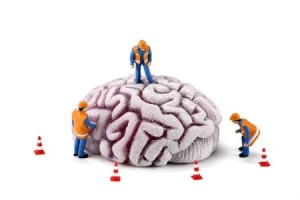The Reproducibility Problem
In January of 2014, a Japanese stem cell scientist published what looked like groundbreaking research in the journal Nature that suggested stem cells could be made quickly and easily. But as James Gallagher of the BBC noted, “the findings were too good to be true.” Her work was investigated by the center where she conducted her research amid concern within the scientific community that the results had been fabricated. In July, the Riken Institute wrote a retraction of the original article, noting the presence of “multiple errors.” The scientist was later found guilty of misconduct. In December of 2014, Riken announced that their attempts to reproduce the results had failed. Dr. Obokata resigned saying, “I even can’t find the words for an apology.”
The ability to repeat or replicate someone’s research is the way scientists can weed out nonsense, stupidity and pseudo-science from legitimate science. In Scientific Literacy and the Scientific Method, Henry Bauer described a ‘knowledge filter’ that illustrated this process. The first stage of this process was research or frontier science. The research is then presented to editors and referees of scientific journals for review, in hopes of being published. It may also be presented to other interested parties in seminars or at conferences. If the research successfully passes through this first filter, it will be published in the primary literature of the respective scientific field—and pass into the second stage of the scientific knowledge filter.
The second filter consists of others trying to replicate the initial research or apply some modification or extension of the original research. This is where the reproducibility problem occurs. The majority of these replications fail. But if the results of the initial research can be replicated, these results are also published as review articles or monographs (the third stage). After being successfully replicated, the original research is seen as “mostly reliable,” according to Bauer.
So while the stem cell research of Dr. Obokata made it through the first filter to the second stage, it seems that it shouldn’t have. The implication is that Nature didn’t do a very good job reviewing the data submitted to it for publication. However, when the second filtering process began, it detected the errors that should have been caught by the first filter and kept what was poor science from being accepted as reliable science.
A third filter occurs where the concordance of the research results with other fields of science is explored. There is also continued research by others who again confirm, modify and extend the original findings. When the original research successfully comes through this filter, it is “mostly very reliable,” and will get included into scientific textbooks.
Francis Collins and Lawrence Tabak of The National Institute of Health (NIH) commented that: “Science has long been regarded as ‘self-correcting’, given that it is founded on the replication of earlier work.” But they noted how the checks and balances built into the process of doing science—that once helped to ensure its trustworthiness—have been compromised. This has led to the inability of researchers to reproduce the initial research findings. Think here of how Obokata’s stem cell research was approved for publication in Nature, one of the most prestigious science journals.
The reproducibility problem has become a serious concern within research conducted into psychiatric disorders. Thomas Insel, the Director of the National Institute of Mental Health (NIMH), wrote a November 14, 2014 article in his blog on the “reproducibility problem” in scientific publications. He said that “as much as 80 percent of the science from academic labs, even science published in the best journals, cannot be replicated.” Insel said this failure was not always because of fraud or the fabrication of results. Perhaps his comment was made with the above discussion of Dr. Obokata’s research in mind. Then again, maybe it was made in regard to the following study.
On September 16, 2014, the journal Translational Psychiatry published a study done at Northwestern University that claimed it was the “First Blood Test Able to Diagnose Depression in Adults.” Eva Redei, the co-author of the study said: “This clearly indicates that you can have a blood-based laboratory test for depression, providing a scientific diagnosis in the same way someone is diagnosed with high blood pressure or high cholesterol.” A surprise finding of the study was that the blood test also predicted who would benefit from cognitive behavioral therapy. The study was supported by grants from the NIMH and the NIH.
The Redei et al. study received a good bit of positive attention in the news media. It was even called a “game changing” test for depression. WebMD, Newsweek, Huffington Post, US News and World Report, Time and others published articles on the research—all on the Translational Psychiatry publication date of September 16th. Then James Coyne, PhD published a critique of the press coverage and the study in his “Quick Thoughts” blog. Coyne systematically critiqued the claims of the Redei et al. study. Responding to Dr. Rediei’s quote in the above paragraph, he said: “Maybe someday we will have a blood-based laboratory test for depression, but by themselves, these data do not increase the probability.”
He wondered why these mental health professionals would make such “misleading, premature, and potentially harmful claims.” In part, he thought it was because it was fashionable and newsworthy to claim progress in an objective blood test for depression. “Indeed, Thomas Insel, the director of NIMH is now insisting that even grant applications for psychotherapy research include examining potential biomarkers.” Coyne ended with quotes that indicated that Redei et al. were hoping to monetize their blood test. In an article for Genomeweb.com, Coyne quoted them as saying: “Now, the group is looking to develop this test into a commercial product, and seeking investment and partners.”
Coyne then posted a more thorough critique of the study, which he said would allow readers to “learn to critically examine the credibility of such claims that will inevitably arise in the future.” He noted how the small sample size contributed to its strong results—which are unlikely to be replicated in other samples. He also cited much larger studies looking for biomarkers for depression that failed to find evidence for them. His critique of the Redie et al. study was devastating. The comments from others seemed to agree. But how could these researchers be so blind?
Redie et al. apparently believed unquestionably that there is a biological cause for depression. As a result, their commitment to this belief effected how they did their research to the extent that they were blind to the problems pointed to by Coyne. Listen to the video embedded in the link “First Blood Test Able to Diagnose Depression in Adults” to hear Dr. Redie acknowledge she believes that depression is a disease like any other disease. Otherwise, why attempt to find a blood test for depression?
Attempts to replicate the Redei et al. study, if they are done, will raise further questions and (probably) refute what Coyne said was a study with a “modest sample size and voodoo statistics.” Before we go chasing down another dead end in the labyrinth of failed efforts to find a biochemical cause for depression, let’s stop and be clear about whether this “game changer” is really what it claims to be.



